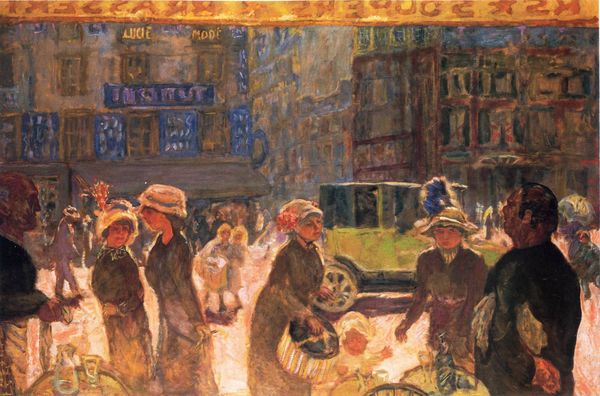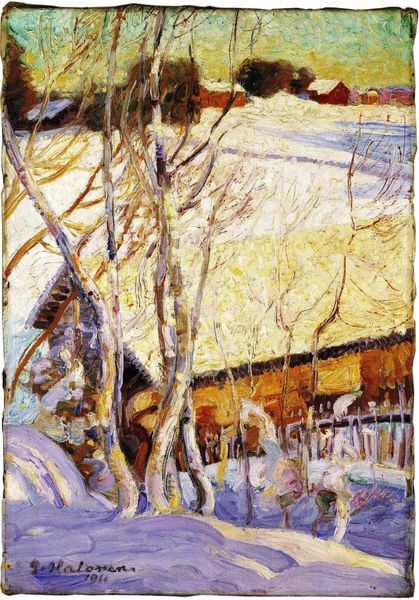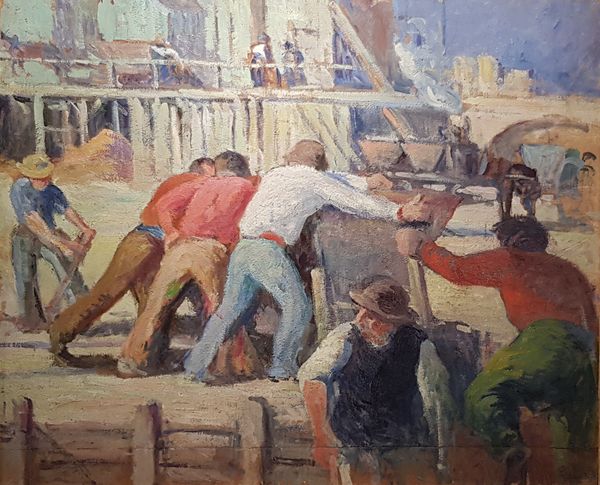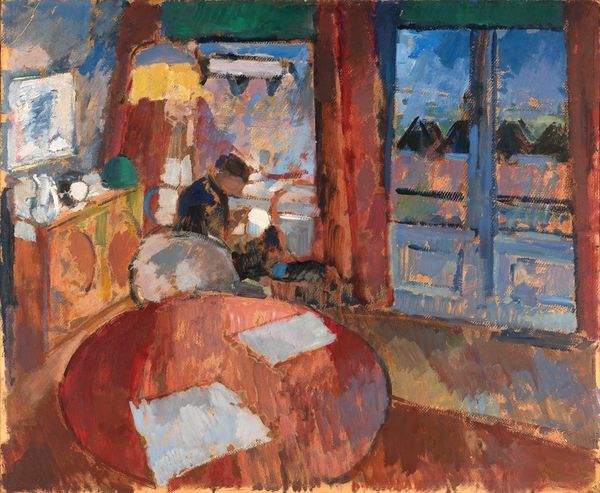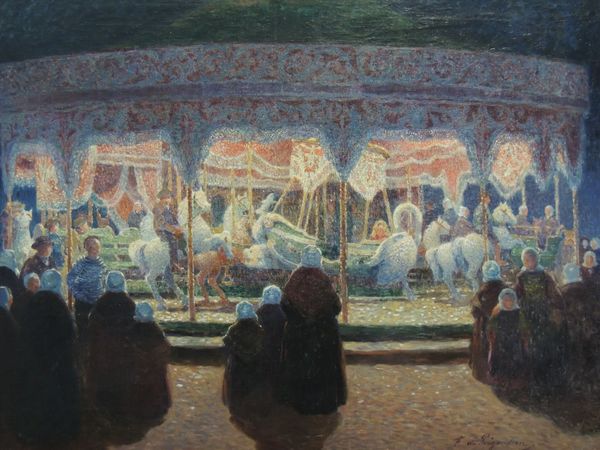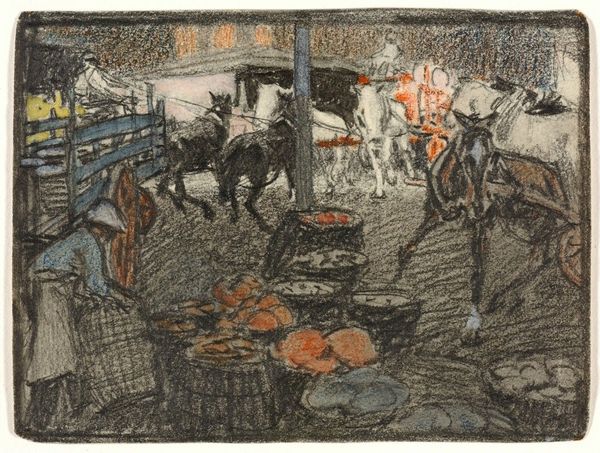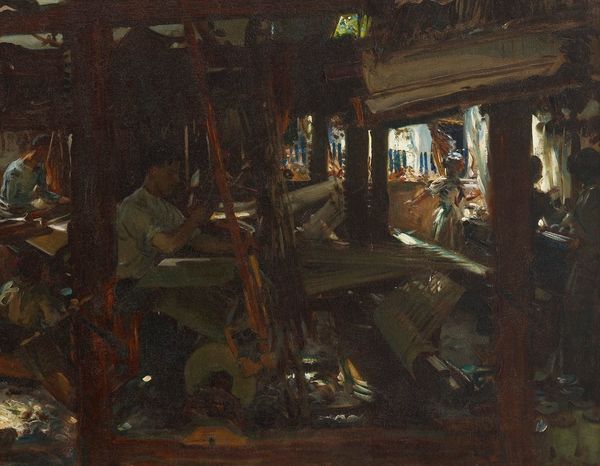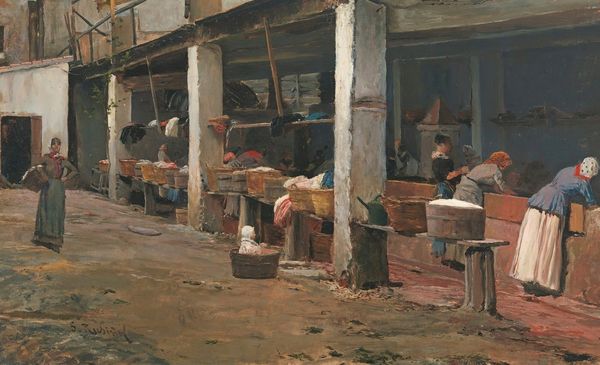
Copyright: Public domain
Curator: Henri Martin’s "Work," created around 1914, immediately brings to mind themes of labor and urban development through its bustling portrayal of workers in a cityscape. Editor: It's remarkably dynamic. The choppy, impasto strokes in oil paint capture movement. It also appears rather hectic and crowded with no immediately apparent focus. Curator: True. This piece, rooted in Neo-Impressionism and Post-Impressionism, goes beyond mere documentation. Given its date just prior to WWI, it implicitly engages ideas around societal development and progress through labor at a specific historical turning point. Editor: Absolutely. Look closely at how the physicality of work is presented here. We see laborers enmeshed in this web of construction, likely enduring hard work—a testament to human ingenuity and exploitation both, depending on one’s place in that historical picture. Curator: Considering labor as both material action and symbolic value is a pivotal entry point here. These anonymous figures building within the urban context may suggest how identity is shaped by economic roles in shaping modernity, no? How race and gender might influence or shape experiences of this industrial work is also an interesting angle to address in that analysis. Editor: And notice the colors! Despite the somewhat drab subject, Martin utilizes varied shades to create depth, bringing this entire chaotic construction scene alive through tactile qualities and tangible interactions on canvas. How it's MADE affects what can be made materially; therefore, what futures these laborers have socially becomes visually interesting here. Curator: Your insights beautifully highlight its material impact on lived reality. Ultimately, approaching this painting as a historical reflection of work as the basis for social identity as we entered a whole new and turbulent period remains, I think, the way to truly understand the context of Henri Martin's endeavor. Editor: Indeed! "Work," in its complex portrayal of production, presents both questions of artistry as technique, as well as questions of societal and economic values still being discussed now, years later.
Comments
No comments
Be the first to comment and join the conversation on the ultimate creative platform.

